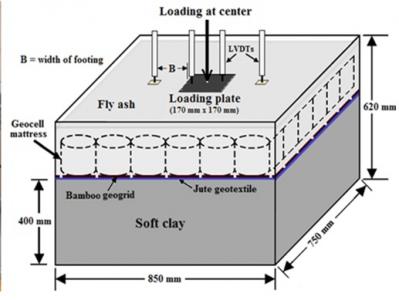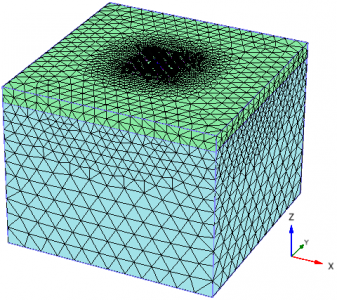

A cellular mattress used in combination with geomaterials is termeda geocell mattress, a three-dimensional (3D) honeycomb structureconsisting of interconnected multiple cells that can be of differentshapes and sizes. Currently, the cells are generally made of strips ofpolymer sheet or geotextile, geogrid sheets, high density polyethylene(HDPE), or Neoloy polymeric alloy. Theinterconnected cells confine the infill material, improving its shearstrength considerably by virtue of the interface wall shear resistanceand lateral confining stress as a result of mobilization of hoop tensionin the cell walls. A geocell mattress (made of waste plastic bottle) with suitable infill materialas a composite system is preferably installed over soft subgrade soilto strengthen the foundation capacity along with reduction in totaland differential settlements. The concept of using cellular structuresfor lateral confinement was developed in the 1970s by the U.S. Army Corps of Engineers. Geocell confinementdevelops a better composite material and distributes the footingload over a wider area with reduced settlement compared with otherplanar and randomly distributed mesh elements. An attempt was made to perform3D numericalmodelingof amultiple-cell geocellmattresswith fly ash as the infill materialoverlying soft clay, with the cell geometry resembling a perfectly circular vertical.The cellular mattress was a honeycomb structure consisting of interconnected multiple circular cells. Theinfluence of the height, diameter, and tensile stiffness of the cell and the width of the entire mattress on the pressure-settlement response offooting, surface deformation during footing settlement, and mobilization of hoop tension in the cell walls are illustrated.
Prof. J N Mandal
